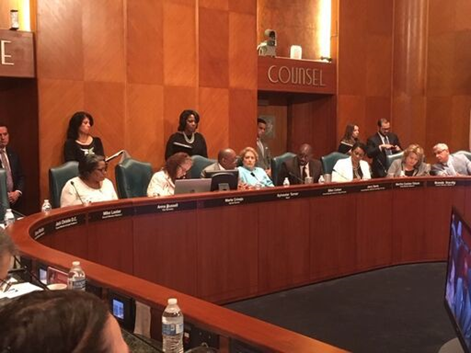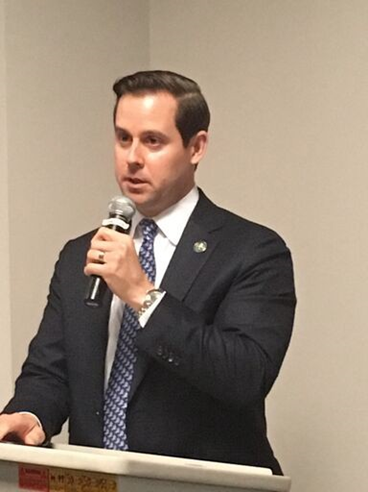Municipal (City) Government
Overview
Municipal (City) Government
Learning Objective
By the end of this section, you will be able to:
- Explain the structure and function of municipal government in Texas
Introduction
This section discusses the structure and function of municipal government in Texas.
General Law and Home Rule Cities
While every square inch of Texas is included in one of its 254 counties, not all of Texas falls inside the limits of a city. Cities are created by its citizens, who are granted a charter by the state of Texas in the same way a corporation operates under a state charter.
Cities can be organized in two basic ways, depending on their size. Cities with a population of less than 5000 people can only exist as general law cities. A general law city has only the powers specifically granted by the legislature, which do not include broad annexation or regulatory powers. Cities with a population greater than 5000 may elect home rule status. Home rule cities can do virtually anything they want that isn’t prohibited by the legislature – leading to some of the issues discussed at the beginning of this chapter.
Larger cities (those exceeding 225,000) have a unique authority: that of “limited annexation”, whereby an adjoining area may be annexed for purposes of imposing city ordinances related to safety and building codes. The residents can vote for mayor and council races but cannot vote in bond elections (and, consequently, the city cannot directly collect city sales tax from businesses or city property tax from owners).
The City of Houston has exploited a provision in the state law that allows it to share in sales tax revenues along with special districts (municipal utility districts, for instance) that cross an area “annexed for limited purposes.” This has led to a spiderwebbing known as limited purpose or special purpose annexations that consist of mostly commercial properties facing major streets. These extend through otherwise unincorporated areas in what is known as the city’s extraterritorial jurisdiction (ETJ), which, for Houston, extends five miles beyond its city limits. This has led to conflicts between city and county officials over the provision of services to these areas not included in the agreements.
The purpose of limited annexation is to allow the city to control development in an area that it eventually will fully annex; it is meant to do so within three years (though it can arrange “non-annexation agreements” with local property owners), and those agreements with municipal utility districts also cloud the picture. During each of the three years, the city is to develop land-use planning for the area (zoning, for example), identify needed capital improvements and ongoing projects, and identify the financing for such as well as to provide essential municipal services.
Municipal elections in Texas are nonpartisan in the sense that candidates do not appear on the ballot on party lines, and do not run as party tickets. However, a candidate’s party affiliation is usually known or can be discerned with minimal effort (as the candidate most likely has supported other candidates on partisan tickets). In some instances, an informal citizen’s group will support a slate of candidates that it desires to see elected (often in opposition to an incumbent group with which it disagreed on an issue). However, each candidate must be voted on individually.
Governance

Image Credit: Andrew Teas, License: CC BY
Who runs city government?
Cities in Texas can be organized in a variety of ways. The most common structure is the council-manager form of government. Citizens in San Antonio decided long ago that the political skill set required to be elected mayor of the city was not necessarily the skill set required to manage the day-to-day operations of a municipal water and sewer system with more than 12,000 miles of pipe – enough to stretch from Texas to Australia. While the mayor of San Antonio presides over council meetings, the daily operations of city government are overseen by a professional city manager, who is hired by the city council for that purpose. Most major Texas cities, including Austin, Galveston, Dallas, and Fort Worth, use a council-manager form of government.

Image Credit: Andrew Teas, License: CC BY.
Houston, on the other hand, uses a strong-mayor form of government. The mayor of Houston not only presides over city council meetings, but is also the city’s chief executive officer. Houston’s strong-mayor system is considered especially strong since Houston mayors also have unilateral control over the city council agenda. On the other hand, Houston has a unique counterbalance in the form of an independently-elected city controller, a chief financial officer who must concur in all city expenditures and bond issues, and who can conduct independent audits of city departments.
Some cities elect all their council member-at-large, meaning any qualified person who lives in the city can run for any position. Other cities have adopted single-member districts to ensure that every part of town has a council member looking after the needs of its residents. At-large systems are frequently criticized for making it difficult for members of racial minority groups to be elected. Single-member district systems are criticized for creating a “turf” mentality that places parts of town in competition with each other for parks and libraries, removing the political incentive for council members to consider the needs of the city as a whole. Houston has a mixed system, with five members elected at large, eleven from single-member districts.
Licenses and Attributions
CC LICENSED CONTENT, ORIGINAL
Municipal (City) Government in Texas. Authored by: Andrew Teas. License: CC BY: Attribution